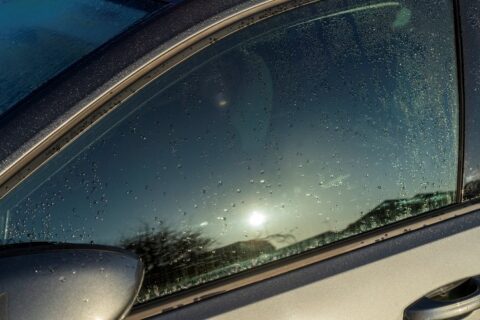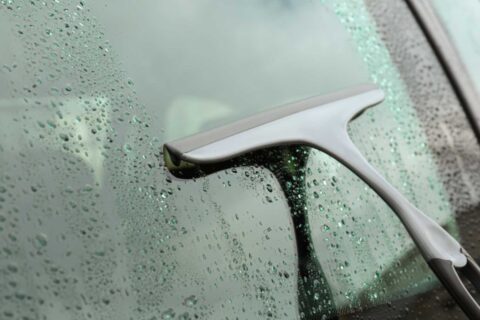Oregon Automotive Window Tinting Laws Part II: Rules and Compliance
My first article covered the basics of Oregon auto window tinting laws. In this follow-up, I will dig a bit deeper to examine some of the finer points not addressed in the previous article.
First, a quick review.
Discussions around window tinting laws always center around the maximum allowable visible light transmittance, or VLT of the various tinting materials. The VLT is a simply a measurement of how dark a film is, represented by a percentage of how much light passes through it.
When considering these measurements, it is important to realize that the VLT indicated on a box of film is not the VLT it will measure on a vehicle, because “plain” auto glass already blocks somewhere between 20% – 25% of the available light. Therefore, the initial light transmittance measurement changes when the film is bonded to auto glass. How much it changes depends on the type and thickness of the glass, which can vary considerably from one vehicle to the next.
In Oregon, the legal limit is a material with VLT of 50%, and once applied to the vehicle must measure a VLT of 35% or higher to be compliant. In other words, if a law enforcement officer uses a light meter device to ascertain the VLT of your vehicle’s tinted glass, the measurement on that device – which is measuring both the film and glass together – must read 35% or higher to be compliant. In order to achieve such a reading, it is necessary to begin with a material with a VLT higher than 35% to account for the glass itself, hence the 50% VLT film requirement.
Next, I will delve into another important aspect of the Oregon Vehicle Code, namely that it makes a distinction between different types of vehicles and how their respective windows are regulated.
Regular Car VS. “Multi-purpose Passenger Vehicle”
If you are one of the thousands of Oregonians who own a sport utility vehicle, truck or van, (and statistically, you are, since this group comprises approximately 65% of all vehicles in Oregon) then you have doubtless observed that most of these vehicles come straight off the lot with very dark windows on the rear section of the vehicle.
You may be wondering, “If State law is a VLT of 50%, then why are these windows on the rear section of my SUV so much darker?” The answer is that these VLT limits don’t apply to all vehicle types equally.
Specifically, the State makes a distinction between an ordinary sedan, and a “multi-purpose passenger vehicle”. For these multi-purpose passenger vehicles, only the windows in the front-most doors are regulated – there are no limits to how dark the windows can be in the rear section.
What is a “multi-purpose passenger vehicle”? According to ORS 815.221, it is defined as:
“…a motor vehicle with motive power that is designed to carry 10 or fewer persons and is constructed either on a truck chassis or with special features for occasional off-road operation.”
While this wording is a bit clunky, it is reasonably clear that it is meant to indicate a truck, van or sport utility vehicle. However, the “special features for occasional off-road operation” provision presumably means that regular sedans with all-wheel drive would be in this MPV category as well, even though they may not fit the typical image of a “sport utility vehicle” (Examples include: Subaru WRX, Tesla Model 3, Hyundai Ioniq 6, BMW 3 and 5 -Series, Mercedes E and C Class, Mazda 3, Kia K5, Audi A3-6, Alfa Romeo Giulia, and many others).
What this means in practical terms, is that if you have a Honda Civic, then 50% is the darkest legally permissible window film that can be applied to any of the windows on the sides and rear of that vehicle. If, on the other hand, you have a Toyota 4-Runner, 50% is the darkest material you can apply to just the front two door panes, but the windows behind those can be darker than 50% if desired.
It has been the standard for many years now that vehicle manufacturers offer “privacy glass” in the rear sections of trucks, vans and sport utility vehicles. Generally speaking, this privacy glass has a VLT of 20%. However, since this glass is not specifically engineered to block ultraviolet or infrared radiation, it is very common for our customers to request application of solar-control materials to these panes. And since there are no restrictions on how dark these windows can be, many customers also like to “double up” on the privacy factor.
Additional Facets of Oregon Auto Window Tinting Laws
- It is legal to apply a material (of any VLT) to the top six inches of a windshield. This is known in the industry as a “visor strip”, and it is a great way to reduce glare, particularly if you have a commute at a time of day when the sun is low in the sky and the direct glare is a safety concern.
- There is a provision in the Oregon Vehicle Code to permit material that is darker than 50% if an individual has a legitimate medical need for such a thing (i.e. extreme light sensitivity). This provision requires specific documentation from a licensed physician, and the statutes were recently updated to include a wider range of acceptable documentation for this exemption.
- Wording in the statute specifies that the “light reflectance” of the tinting material must be 13% or less. It seems that the lawmakers wanted to put a limit on how “reflective” a window film could be, presumably to prevent mirrored window films from blinding other drivers with direct sun reflections. However, devices that can objectively measure reflectivity on glass are rare and expensive. In my thirty-plus year career, I have never seen or heard of any law enforcement official who actually possessed such a device, so there does not seem to be any reliable way to determine whether someone is compliant with this part of the vehicle code. It is essentially ignored by both law enforcement and the public.
- The vehicle code emphasizes that eligibility for classification as a multi-purpose passenger vehicle is contingent on having side mounted rear-view mirrors. Why they felt the need to be so adamant about this is a mystery. Have you ever seen any North American automobile in the last fifty years that didn’t have side mirrors? Perhaps the Oregon lawmakers were so forward thinking that they anticipated the arrival of the camera-based “virtual door mirrors” that are currently being introduced in some vehicles.
Common Misconceptions Regarding Oregon Auto Window Tinting Laws:
Next, we will take a closer look at some of the commonly held ideas about window tint laws that we have heard over the years.
Misconception #1: “Police can’t pull you over just for tinting, you have to be doing something else illegal first.”
Reality: Oregon law enforcement absolutely can pull you over “just for tinting”. Non-compliant window film is a Class B traffic infraction, and they don’t need any other justification. For comparison, exceeding the speed limit by 21-30 mph is also a Class B infraction.
Misconception #2: “I won’t get a citation for illegal window tinting in another state if my vehicle is registered in Oregon.”
Reality: You are responsible for complying with the laws of the state whose roads you are driving on, regardless of where your vehicle is registered. Local officials may exercise discretion and leniency enforcing their laws on out-of-towners, but they are not required to.
Misconception #3: “I’ll just tell the cops, ‘I bought the car with this dark tint already on it!’ if I get pulled over.”
Reality: Like the previous example, if this excuse succeeds in avoiding a citation, it will be because of the individual officer’s benevolent mood, not because of any legal provision legitimizing it.
Conclusion
In Oregon it is legal to apply window film with a 50% VLT, provided that the aggregate (on the vehicle) VLT is not lower than 35%. This applies to all side and rear windows of regular sedans and coupes, and to the front two door panes of trucks, vans and sport utility vehicles – automobiles classified as “multi-purpose passenger vehicles”.
The windows behind the “B-pillars” of multi-purpose passenger vehicles have no restrictions, likewise with the top six inches of any windshield.
It is my hope that these writings will reduce confusion regarding Oregon’s auto window tinting laws. Thanks for reading!
CALL US TODAY TO SCHEDULE YOUR VEHICLE: 503 – 659 – TINT


